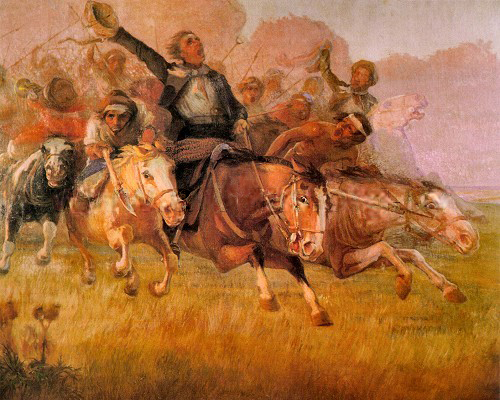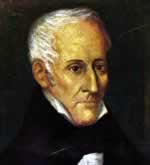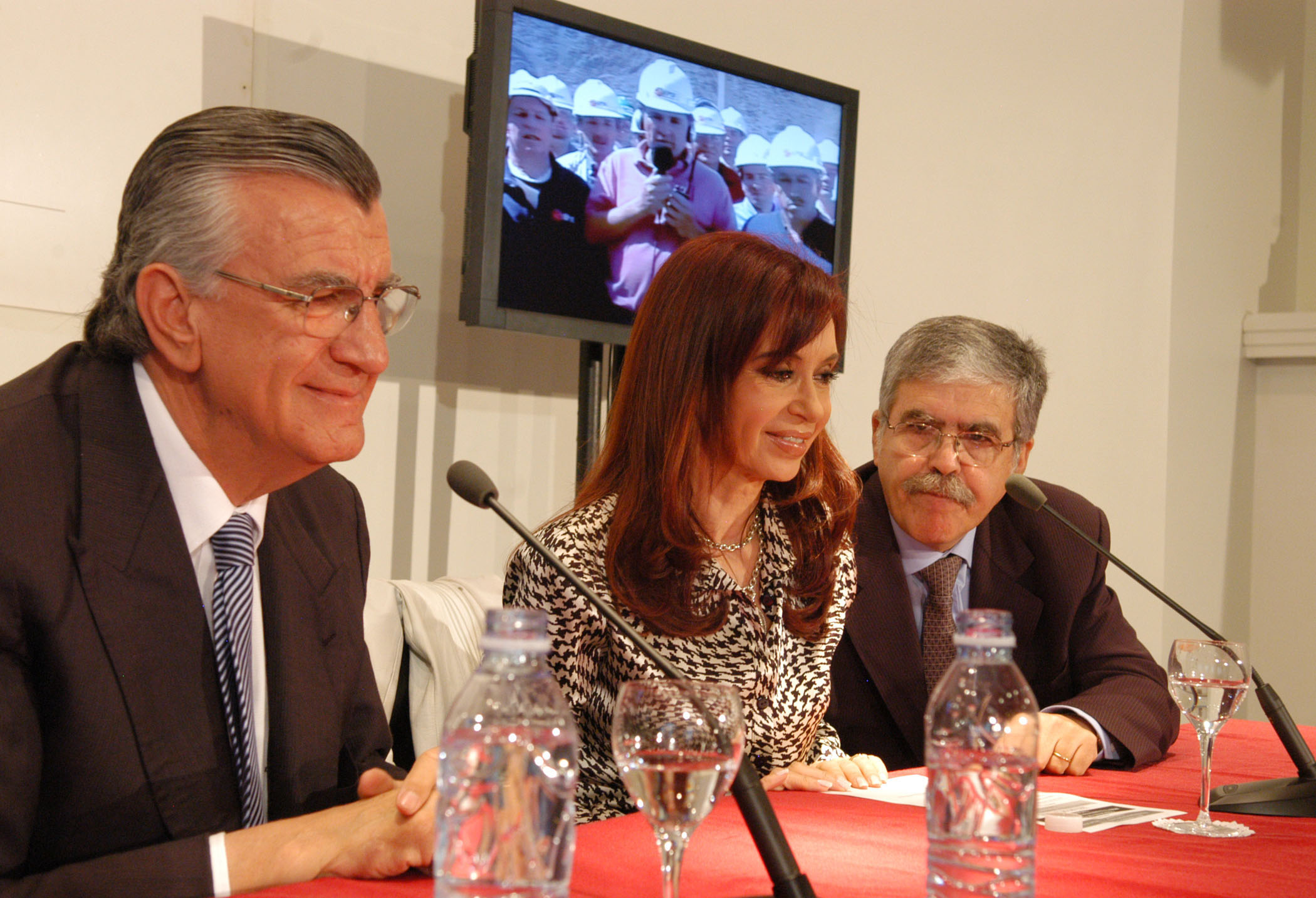|
Congress Of Tucumán
The Congress of Tucumán was the representative assembly, initially meeting in San Miguel de Tucumán, that declared the independence of the United Provinces of South America (modern-day Argentina, Uruguay, part of Bolivia) on July 9, 1816, from the Spanish Empire. Overview Following the May Revolution of 1810, the Viceroy had been replaced by the Primera Junta. The provinces had been moving towards full independence but royalist forces from the Viceroyalty of Peru have had the upper hand in the Upper Peru and were threatening the revolution. On April 15, 1815, a revolution ended the mandate of Carlos María de Alvear and called a General Congress. Delegate deputies, each representing 15,000 inhabitants, were sent from all the provinces to the sessions that started on March 24, 1816. Nevertheless, some territories that formerly belonged to the Viceroyalty of the River Plate did not take part in the Congress: the delegates from the '' Banda Oriental'' ('Eastern Bank', today ... [...More Info...] [...Related Items...] OR: [Wikipedia] [Google] [Baidu] |
San Miguel De Tucumán
San Miguel de Tucumán (; usually called simply Tucumán) is the capital and largest city of Tucumán Province, located in northern Argentina from Buenos Aires. It is the fifth-largest city of Argentina after Buenos Aires, Córdoba, Rosario and Mendoza and the most important of the northern region. The Spanish conquistador founded the city in 1565 in the course of an expedition from present-day Peru. Tucumán moved to its present site in 1685. Overview The city is bordered on the north by Las Talitas ( Tafí Viejo), on the east by Banda del Río Salí and Alderetes (Cruz Alta), on the west by the city of Yerba Buena, and on the south by Lules. The city is located on the slopes of the Aconquija mountains, the easternmost mountain range before the large Chaco- Pampean flats. It is the commercial center of an irrigated area that produces large quantities of sugarcane, rice, tobacco, and fruit, giving the province its nickname, the Garden of the Republic. The National Univer ... [...More Info...] [...Related Items...] OR: [Wikipedia] [Google] [Baidu] |
José Gervasio Artigas
José Gervasio Artigas Arnal (; June 19, 1764 – September 23, 1850) was a political leader, military general, statesman and national hero of Uruguay and the broader Río de la Plata region. He fought in the Latin American wars of independence against the Spanish Empire, but also against the Portuguese Empire and the centralist government of Buenos Aires in the pursuit of political and civil liberties for the peoples of the Viceroyalty of the Río de la Plata. He is considered a ''Libertador'' of Latin America and a national hero in Uruguay, sometimes referred to as "the father of Uruguayan nationhood". His biggest political project was the creation of the Federal League, a confederation of South American provinces under a federal style of government inspired by the United States. Biography Early life Artigas was born in Montevideo on June 19, 1764. His grandparents were from Zaragoza, Buenos Aires and Tenerife (Canary Islands). His grandparents fought in the Wa ... [...More Info...] [...Related Items...] OR: [Wikipedia] [Google] [Baidu] |
Mariano Boedo
Mariano Joaquin Boedo born Mariano Joaquin de Boedo y de Aguirre, (25 July 1782 – 9 April 1819) was an Argentine statesman and soldier. He was a representative to the Congress of Tucumán which on 9 July 1816 declared the Independence of Argentina, signing the Declaration of Independence as a vice president of the Congress. Boedo was born in Salta. His father was Antonio de Boedo y Garcia and his mother was María Magdalena de Aguirre y de Aguirre-Calvo de Mendoza, who belonged to one of Latin America oldest aristocratic families. Boedo was a descendant through his mother of Francisco de Aguirre, a conquistador of Chile, the son of Constanza de Meneses, who was a great granddaughter of Juan Alfonso Téllez de Meneses IV conde de Barcelos y I de Ourém. Boedo was sent to Córdoba at a young age to study at the Loreto Seminary. He studied further at the Universidad Mayor Real y Pontificia San Francisco Xavier, Chuquisaca and became a lawyer in 1805, befriending Mariano Moren ... [...More Info...] [...Related Items...] OR: [Wikipedia] [Google] [Baidu] |
House Of Tucumán
A house is a single-unit residential building. It may range in complexity from a rudimentary hut to a complex structure of wood, masonry, concrete or other material, outfitted with plumbing, electrical, and heating, ventilation, and air conditioning systems.Schoenauer, Norbert (2000). ''6,000 Years of Housing'' (rev. ed.) (New York: W.W. Norton & Company). Houses use a range of different roofing systems to keep precipitation such as rain from getting into the dwelling space. Houses may have doors or locks to secure the dwelling space and protect its inhabitants and contents from burglars or other trespassers. Most conventional modern houses in Western cultures will contain one or more bedrooms and bathrooms, a kitchen or cooking area, and a living room. A house may have a separate dining room, or the eating area may be integrated into another room. Some large houses in North America have a recreation room. In traditional agriculture-oriented societies, domestic animals suc ... [...More Info...] [...Related Items...] OR: [Wikipedia] [Google] [Baidu] |
Federales (Argentina)
The Federalist Party was the nineteenth century Argentine political party that supported federalism. It opposed the Unitarian Party that claimed a centralised government of Buenos Aires Province, with no participation of the other provinces of the custom taxes benefits of the Buenos Aires port. The ''federales'' supported the autonomy of the provincial governments and the distribution of external commerce taxes among the provinces. The federalists advocated a form of political organization that would ensure coexistence between autonomous provinces and a central government with limited powers. They took as a model the federalism of the United States. The view on its historical leader is controversial. Juan Manuel de Rosas is considered by his detractors as a "dictator". Among the various possible ways of characterizing him, his supporters call him a "man of order."http://biblioteca.clacso.edu.ar/clacso/otros/20130610085809/ANSALDI.pdf Ideology and principles They promoted econ ... [...More Info...] [...Related Items...] OR: [Wikipedia] [Google] [Baidu] |
Unitarian Party
Unitarianists or Unitarians (in Spanish, ''Unitarios'') were the proponents of the concept of a unitary state (centralized government) in Buenos Aires during the civil wars that shortly followed the Declaration of Independence of Argentina in 1816. They were opposed to the Argentine Federalists, who wanted a federation of independent provinces. Argentine unitarianism was an ideologic grouping, not a religious one. As such, it is unrelated to religious Unitarianism. History In the Argentine War of Independence the forces of the United Provinces of the Río de la Plata fought Spanish royalists who attempted to regain control of their American colonies after the Napoleonic Wars. After the victorious May Revolution of 1810, disagreements arose between the dominant province of Buenos Aires, who were known as Unitarianists, and the other provinces of Argentina, known as the Federalists. These were evident at least as early as the declaration of Argentine independence in 1816. T ... [...More Info...] [...Related Items...] OR: [Wikipedia] [Google] [Baidu] |
Battle Of Cepeda (1820)
The Battle of Cepeda of 1820 took place on February 1 in Cañada de Cepeda, Buenos Aires Province, Argentina. The conflict was the first major battle that saw Unitarians and Federals as two constituted sides. It ended with the defeat of the national government. Federal League Provinces of Santa Fe and Entre Ríos joined forces to topple the 1819 ''centralist'' Constitution and the Directorial government of the United Provinces of the Río de la Plata. Both provincial leaders, Estanislao López and Francisco Ramírez, were allies of José Gervasio Artigas. Supreme Director José Rondeau called back the Armies that were fighting the Argentine War of Independence to fight the Federals. The Army of the Andes, commanded by José de San Martín refused to abandon the offensive against the royalists in Chile and Peru. The Army of the North, commanded by Manuel Belgrano, mutinied at Arequito, as the troops and the officiality refused to fight a civil war, and asked in ... [...More Info...] [...Related Items...] OR: [Wikipedia] [Google] [Baidu] |
Supreme Director Of The United Provinces Of The Río De La Plata
The Supreme Director of the United Provinces of the Río de la Plata ( es, Director Supremo de las Provincias Unidas del Río de la Plata) was a title given to the executive officers of the United Provinces of the Río de la Plata according to the form of government established in 1814 by the ' (Assembly of Year XIII). The supreme director was to wield power for a term of two years. The assembly hoped to confront the royalists, who had been emboldened by internal dissension within the patriotic faction. To prevent abuses of power, the directorship would be combined with a state council of nine members and would be required to answer to a congress empowered to carry out legislation. After the resignation of José Rondeau following the unitarian defeat at the Battle of Cepeda, the office of Supreme Director was briefly assumed by Juan Pedro Aguirre. He endorsed the Buenos Aires Cabildo to name a governor for the province of Buenos Aires as the national congress dissolved itself on ... [...More Info...] [...Related Items...] OR: [Wikipedia] [Google] [Baidu] |
Argentine Constitution Of 1819
The Argentine Constitution of 1819 was a Constitution drafted by the Congress of Tucumán in 1819, shortly after the Argentine War of Independence. It was promoted by Buenos Aires but rejected by the other provinces and did not come into force. Sanction The Congress of Tucumán had moved to Buenos Aires, after having issued the Argentine Declaration of Independence in San Miguel de Tucumán. The draft was based on the current laws ruling the United Provinces of the Río de la Plata, as well as in foreign constitutions like those of the US, France or Spain. It was written by José Mariano Serrano, Diego Estanislao Zavaleta, Teodoro Sánchez de Bustamante, Juan José Paso and Antonio Sáenz. Contents The Constitution set the separation of powers into three distinct branches, with the executive power to be held by a "Supreme Director", who would be elected by a majority of a Joint Session of Congress, and who would serve a 5-year term. Under the form of government established in 181 ... [...More Info...] [...Related Items...] OR: [Wikipedia] [Google] [Baidu] |
San Juan Province (Argentina)
San Juan Province () is a province of Argentina, located in the western part of the country. Neighbouring provinces are, moving clockwise from the north, La Rioja, San Luis and Mendoza. It borders with Chile to the west. The province has an area of 89,651 km2, covering a mountainous region with scarce vegetation, fertile oases and turbulent rivers. Throughout the entire province there are an important number of paleontological sites. Similar to other regions in Argentina, agriculture is one of the most important economic activities, highlighting wine production and olive oil. Additionally, a variety of fruits and vegetables are produced in the fertile valleys irrigated by artificial channels in the western part, close to the Andes mountain range. This is the second province in volume of wine production at the national level and in South America, and possesses outstanding varietal wines. It is also an important center of mining and oil production. History Before the ... [...More Info...] [...Related Items...] OR: [Wikipedia] [Google] [Baidu] |
Francisco Narciso De Laprida
Francisco Narciso de Laprida (October 28, 1786 in San Juan – September 22, 1829) was an Argentine lawyer and politician. He was a representative for San Juan at the Congress of Tucumán, and its president on July 9, 1816, when the Declaration of Independence of Argentina was declared. Biography Laprida started his studies at the ''Real Colegio de San Carlos'' in Buenos Aires, after which he moved to Santiago de Chile to study Law at the Universidad de San Felipe, where he graduated in 1810. He participated in the '' Cabildo Abierto'' in Chile, one of the first steps towards the independence of that country. In 1812 he returned to San Juan, where he was named trustee of the ''Cabildo'' government house. As such, Laprida collaborated with José de San Martín in the organization of the '' Ejército de los Andes''. Because of his education in law and as an important local figure, he was sent to the Tucumán Congress in 1815 as provincial deputy, together with Fray Justo San ... [...More Info...] [...Related Items...] OR: [Wikipedia] [Google] [Baidu] |






